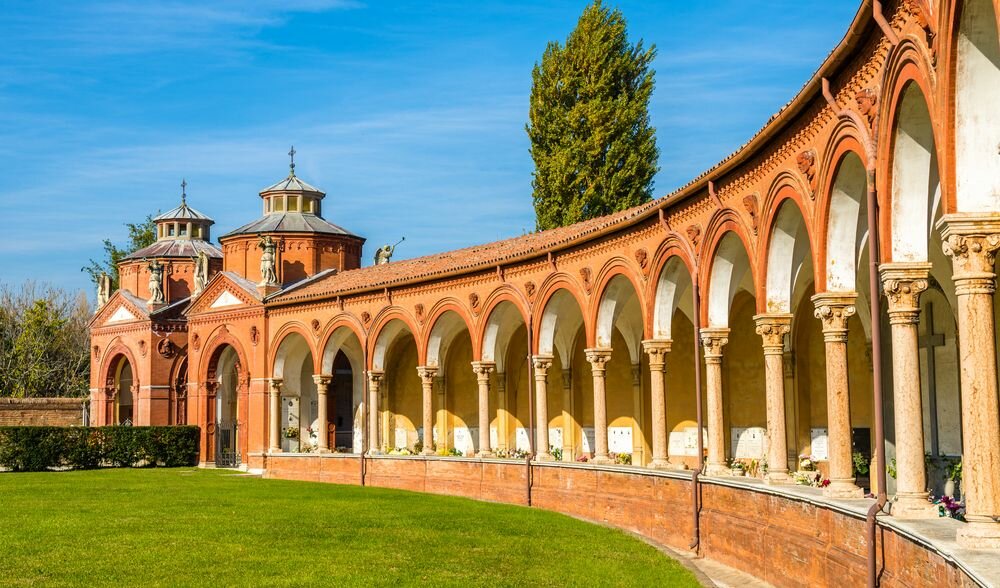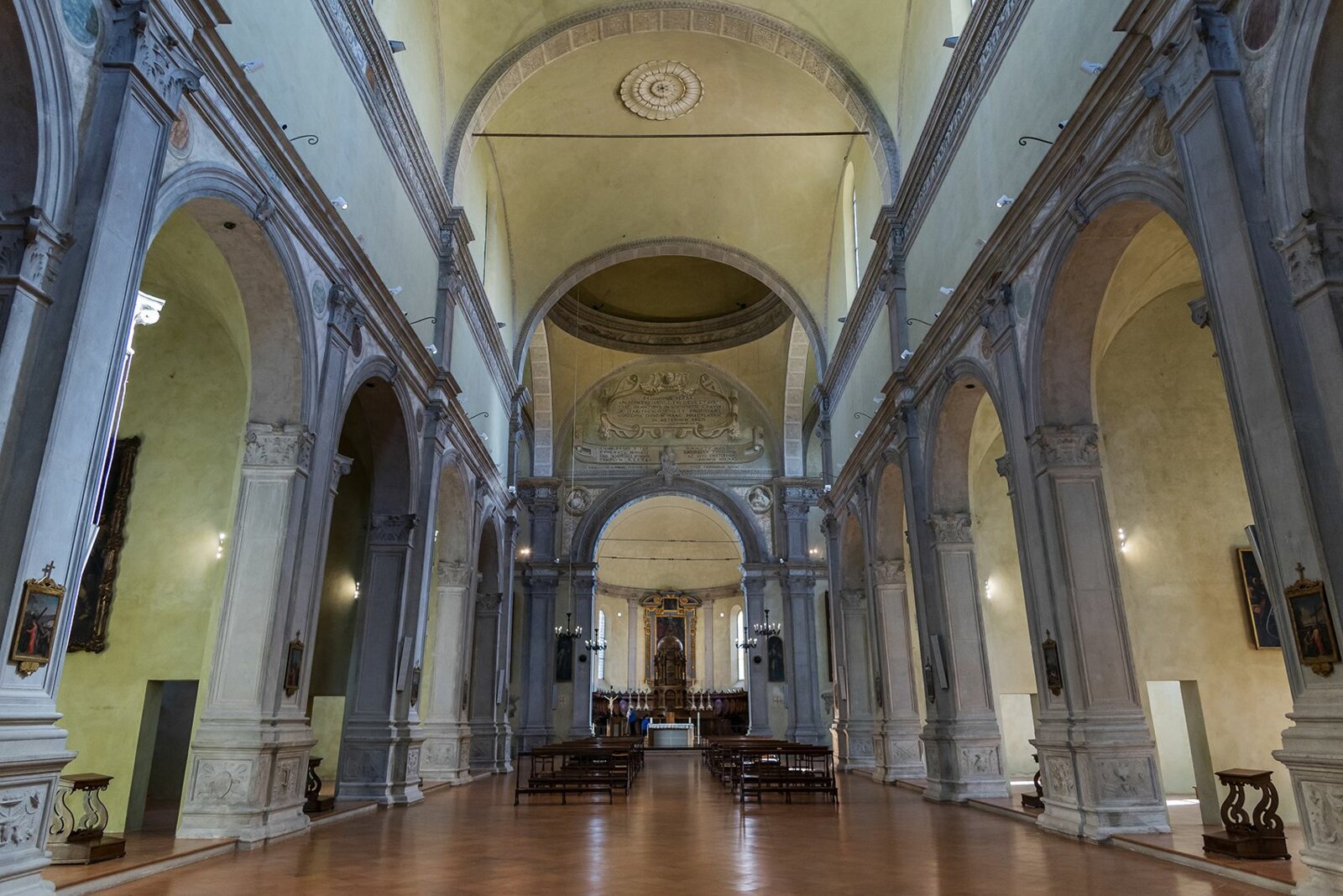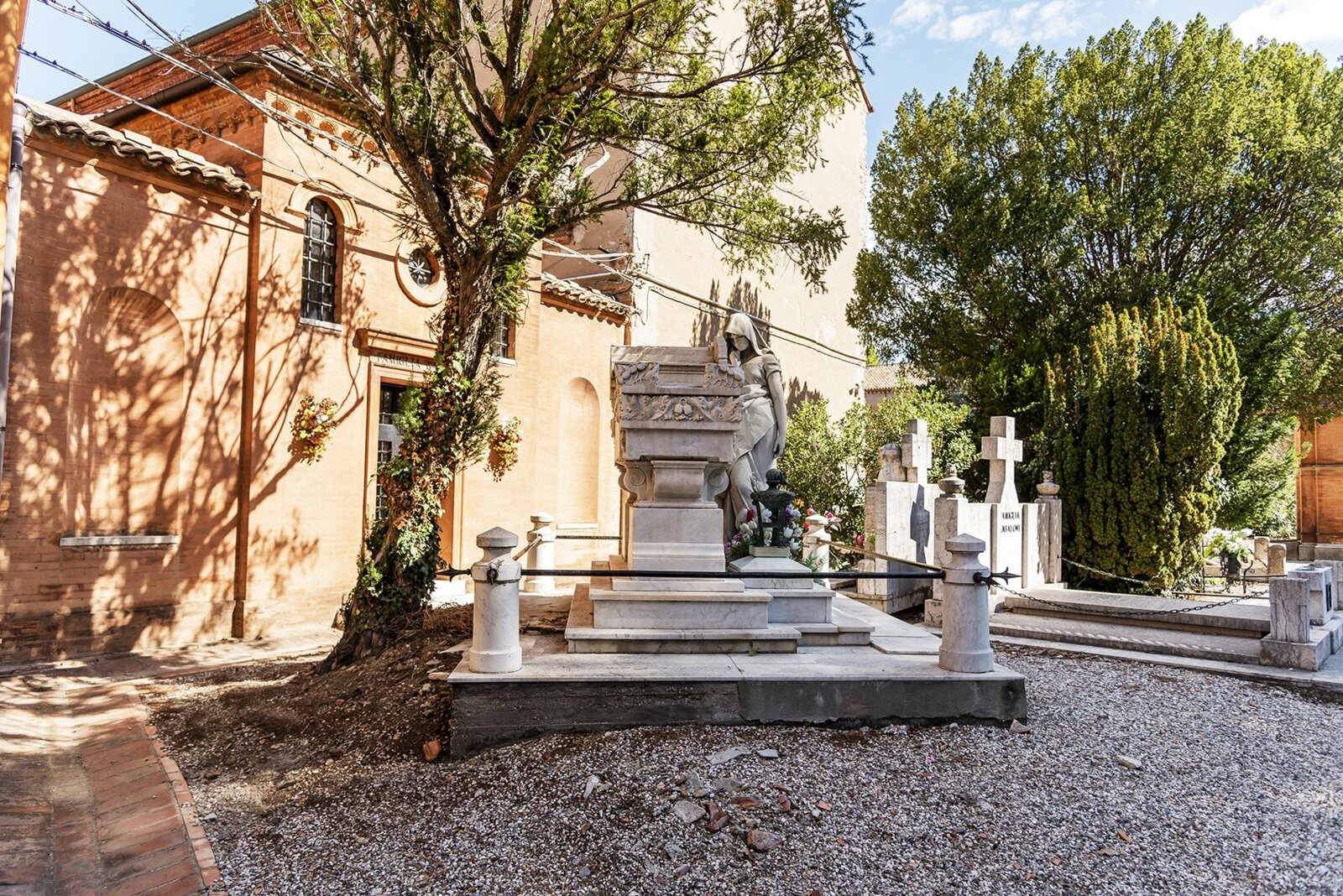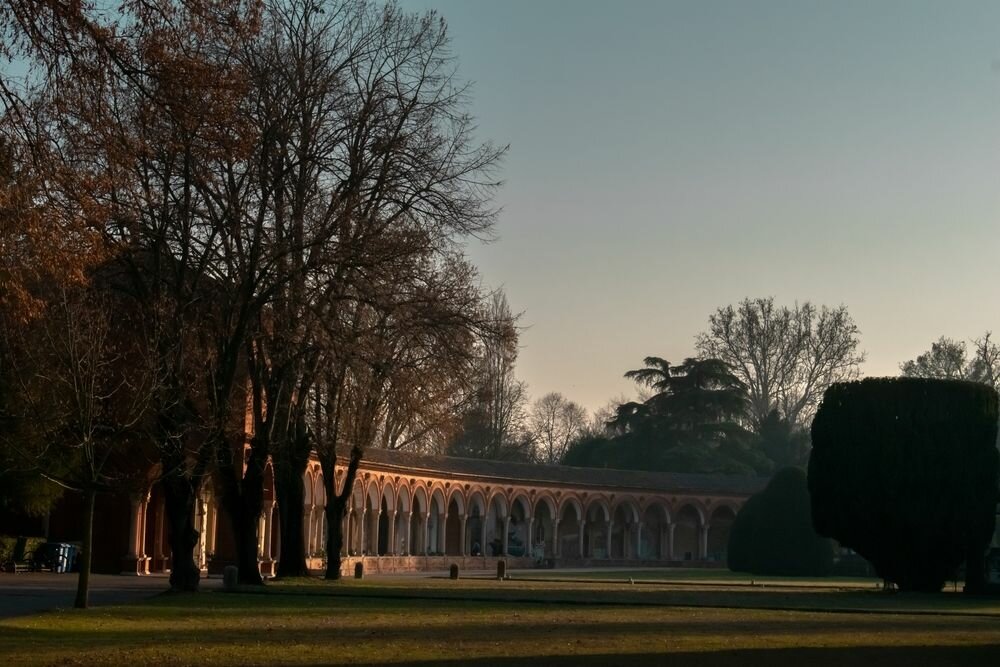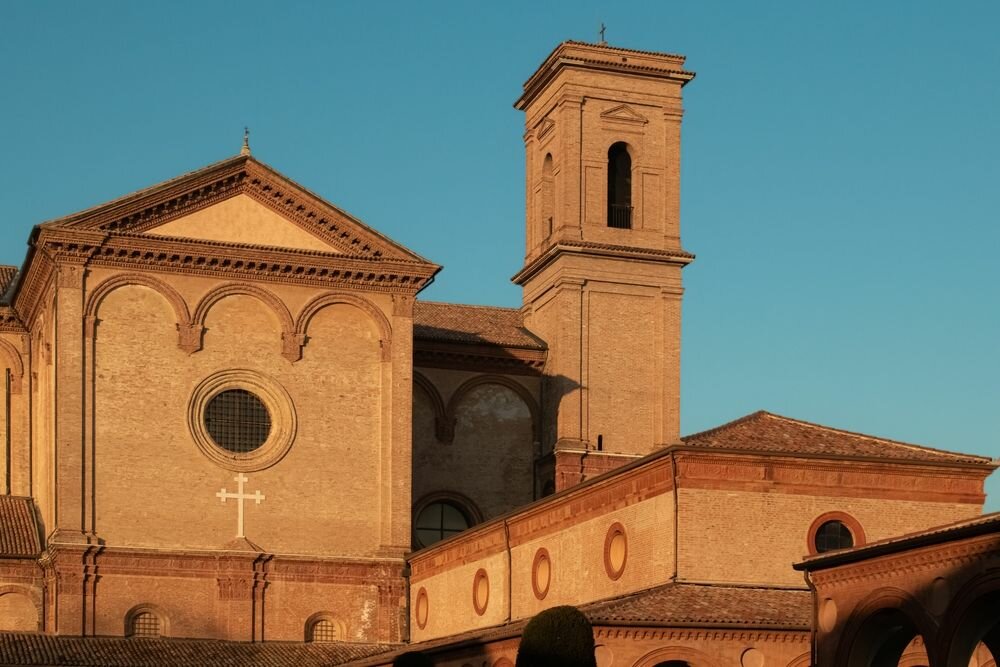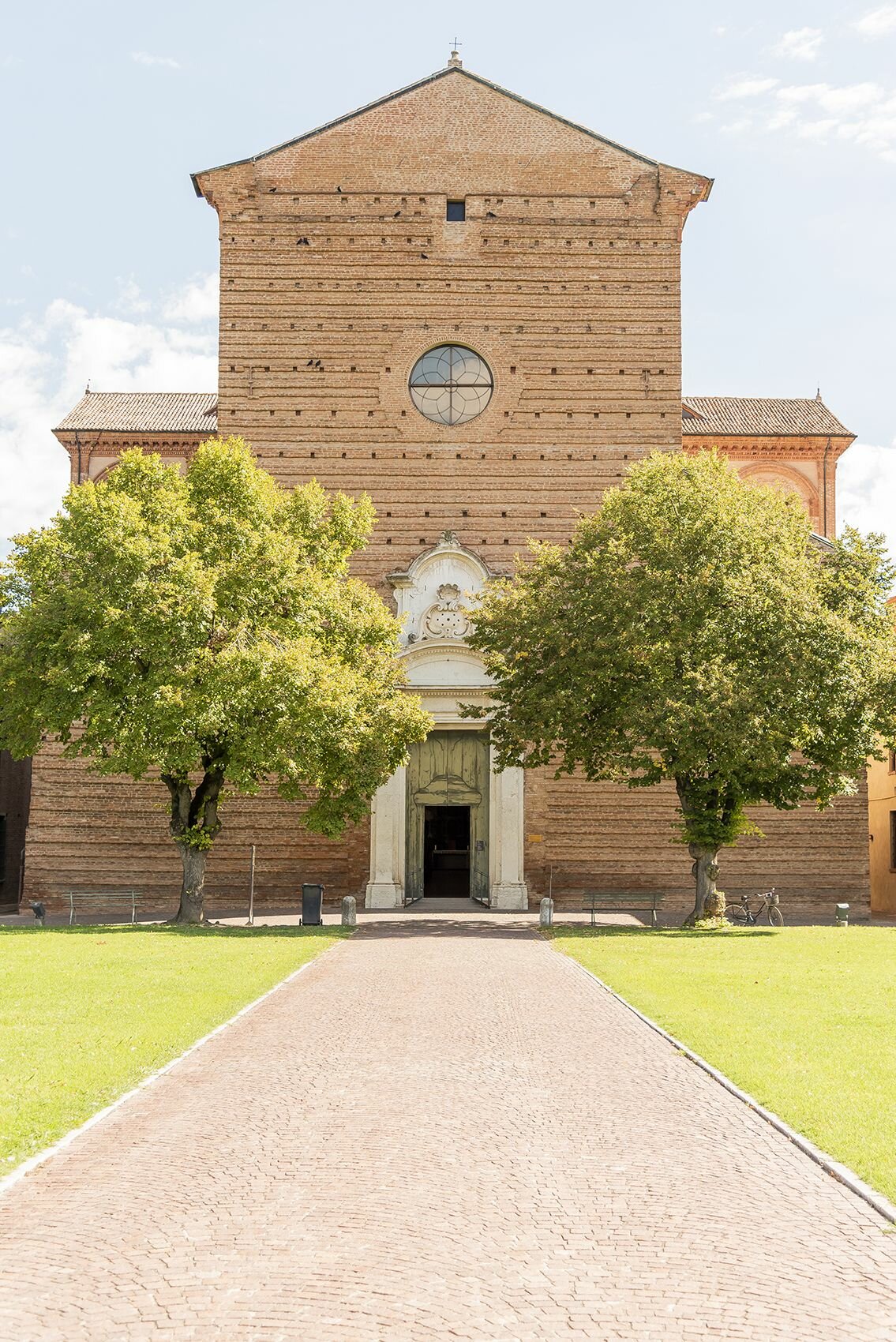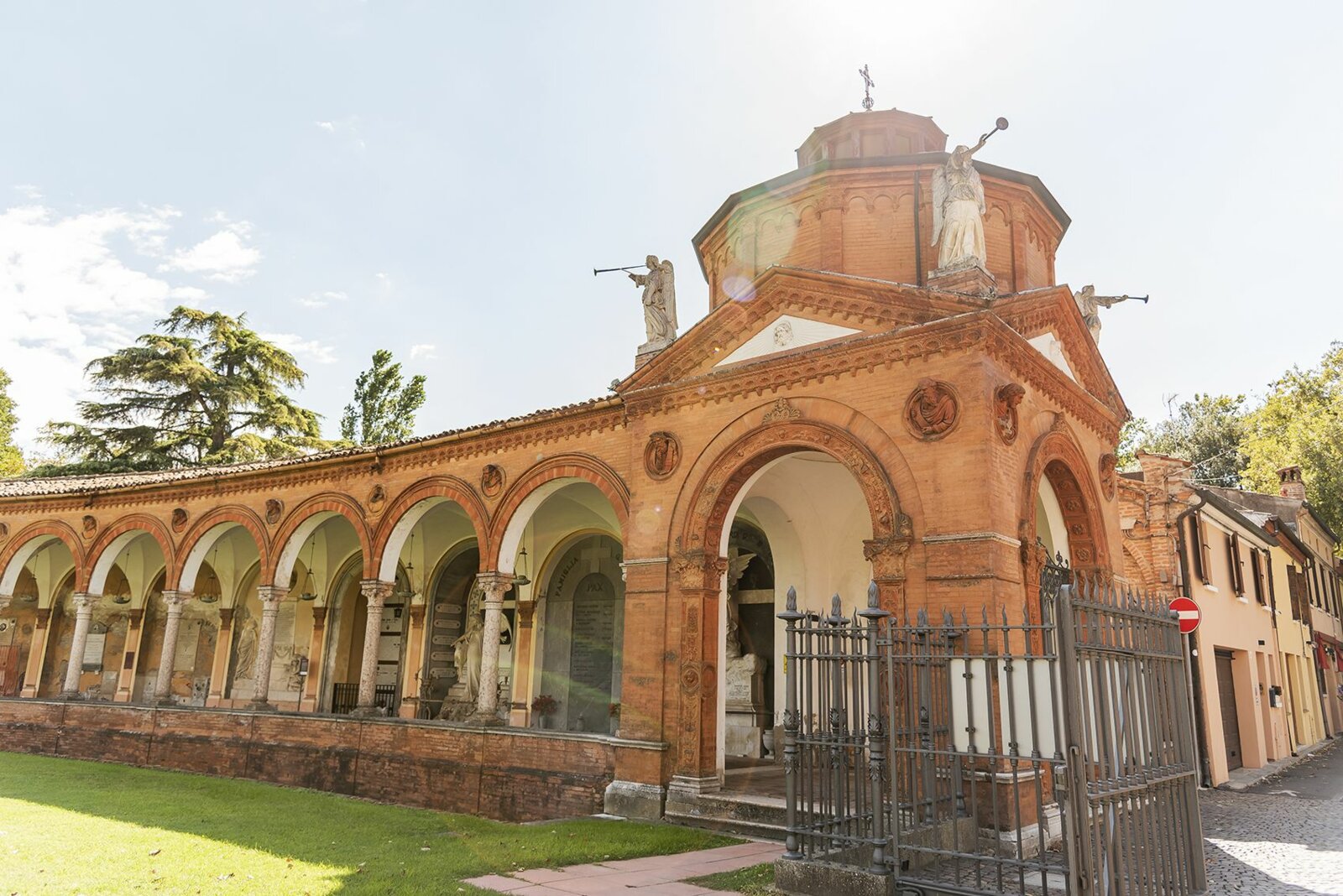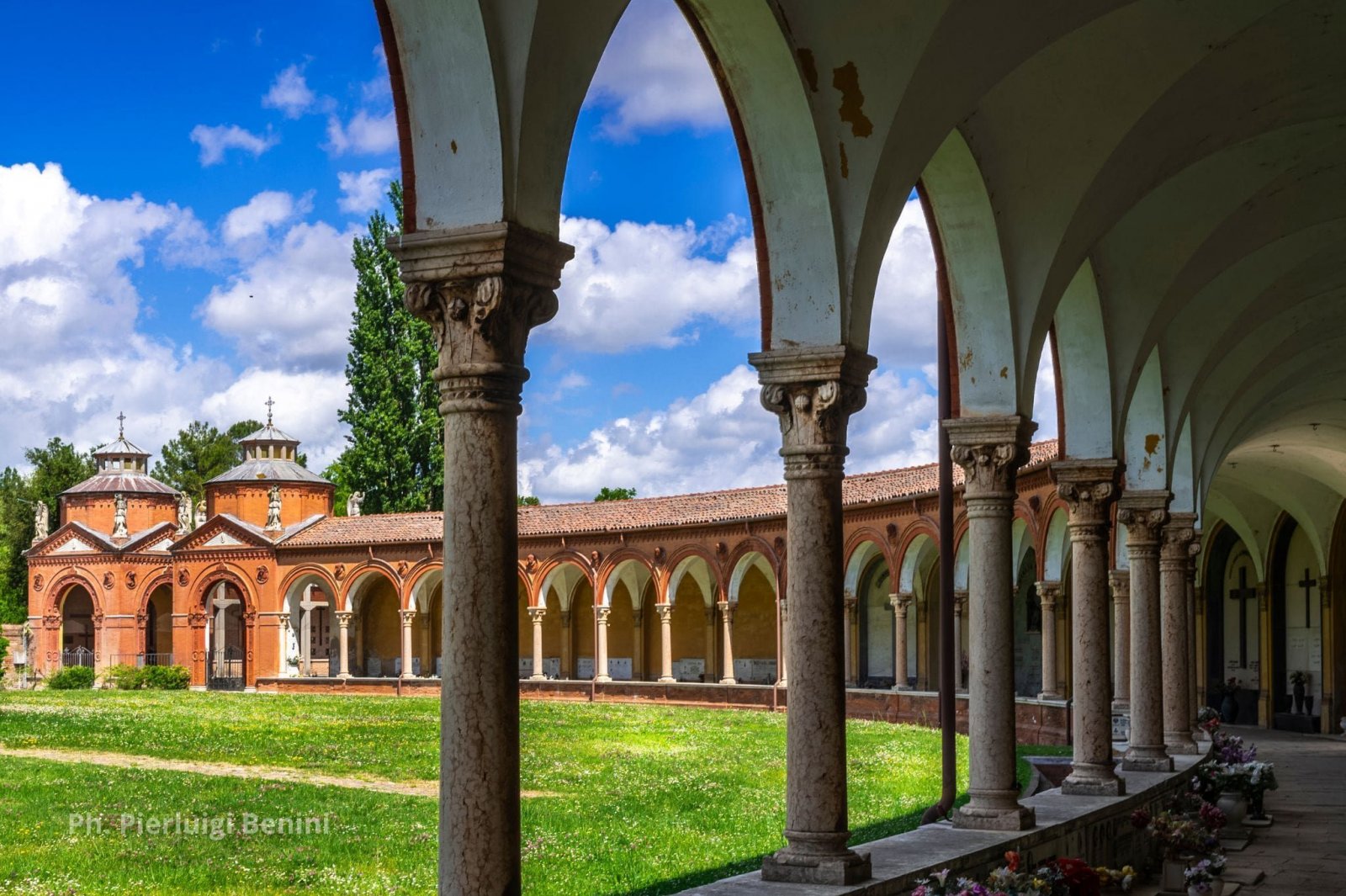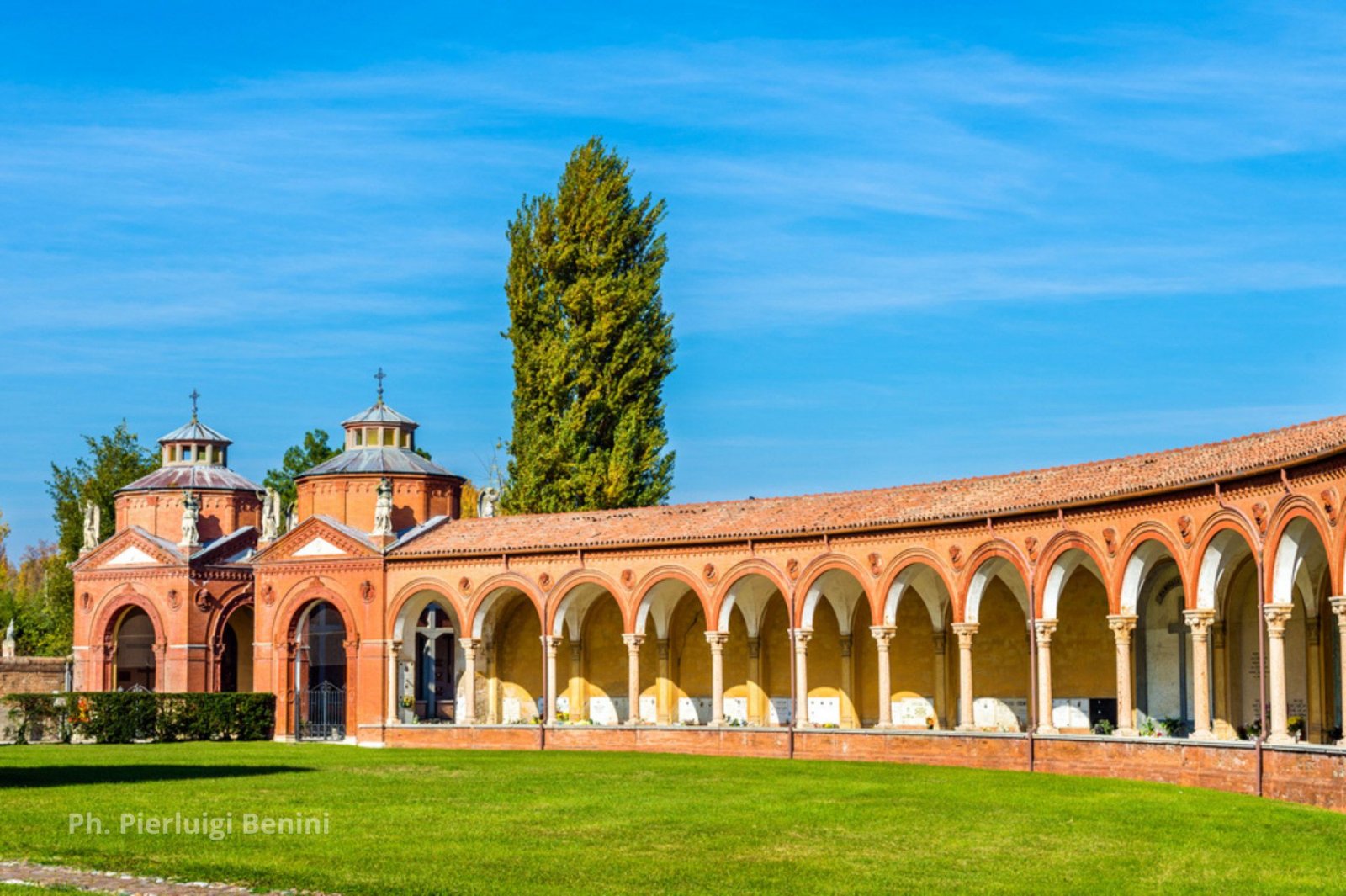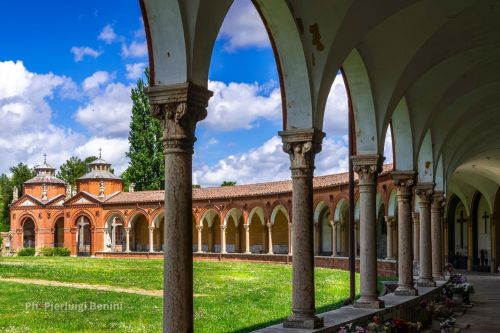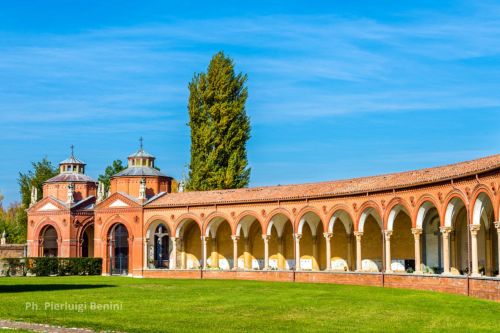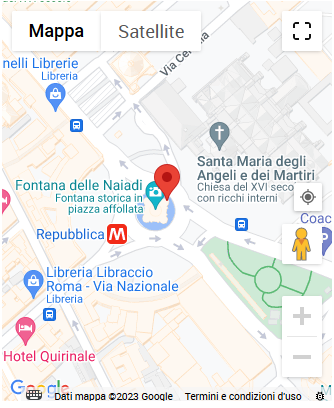Potrebbe interessarti anche

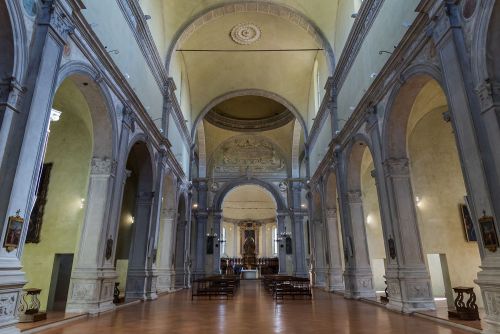
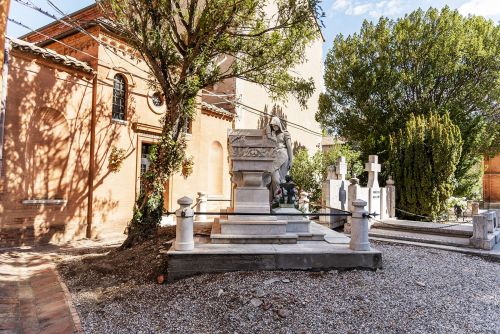
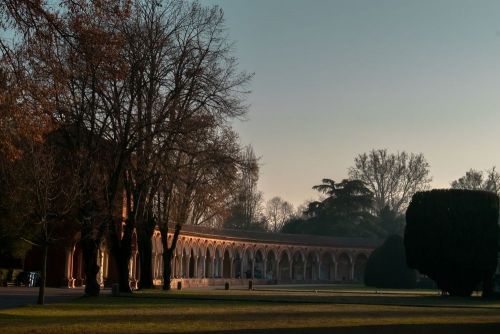
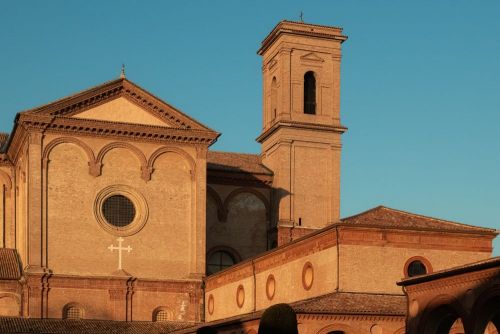
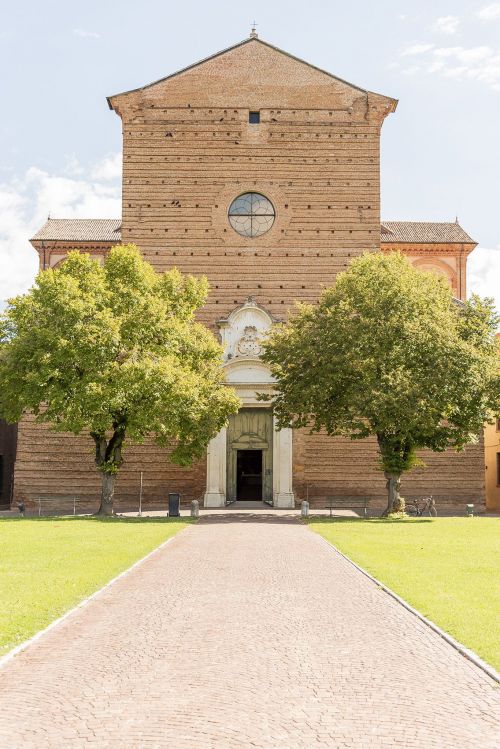
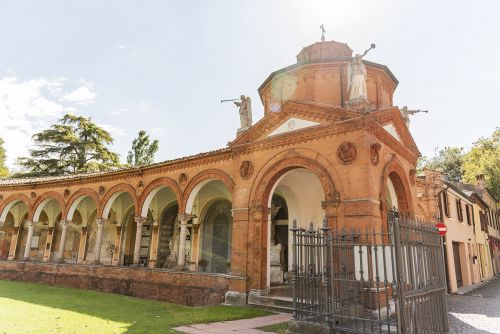
Monumental Charterhouse of Ferrara
Ferrara's Certosa Monumentale (Monumental Charterhouse) is a true open-air museum, where local and national history intersects with the finest works of funerary art.
A visit to this evocative place will be an excellent starting point for you to learn about the city's history in its various periods, from the Renaissance to modernity, by discovering its main local characters.
Historical Notes
The Certosa Monumentale, originally founded as a Carthusian monastery in 1452 at the behest of Duke Borso d'Este, was later enlarged by Biagio Rossetti, who included it within the Addizione Erculea – his plan to expand the city. It was then that the Temple of San Cristoforo, one of the most emblematic architectural works of the Ferrara Renaissance, was built.
Abandoned by the monks following the Napoleonic invasions, the Charterhouse was destined to be cavalry barracks while the monastery was secularized. Finally, in 1813, the monastery area was transformed into a monumental cemetery, with a reform and expansion project by Fernando Canonici.
The Visit
A visit to the Carthusian Monastery of Ferrara constitutes an alternative itinerary to deepen one's knowledge of the city. Here, among its cloisters and porticoes, you can symbolically meet personalities such as Michelangelo Antonioni, Giovanni Boldini, Alda Costa, Giuseppe Savonuzzi, Antonio Foschini and many others. All of them, characters who have contributed greatly to the history of the city and beyond.
Surely the majestic building that stands out in Certosa will catch your eye: it is the Temple of St. Christopher, built in 1498. During the visit, you will be amazed by its grandeur and the works of art preserved there. You will be able to admire masterpieces by Ludovico and Agostino Carracci or Bastianino, but also by other Ferrarese masters of the late 16th century, returned to the community after a major restoration. Inside the temple, you will also find a magnificent 15th-century wooden choir, originally built for the Augustinian church of Sant'Andrea, destroyed by World War II bombings.
The Certosa Monumentale of Ferrara encapsulates the essence of Ferrara's history as well as the eternal value of beauty. You can visit it freely or be guided by following one of the three thematic itineraries.
You may not know about...
THE BORSO FAMEDIO. The first Gran Claustro (Great Cloister), adjacent to the Temple of San Cristoforo alla Certosa, was built by Pietrobono Brasavola and was used as a model by the architect Canonici for the arcade of the loggia in his 19th-century extension work. In the centre of the elegant building intended for burial – the famedio – is the funeral monument to Borso d'Este. Right next door, before the city was revolutionized with the innovative Addizione Erculea project, there was a country lane leading to the present Piazza Ariostea.
THE MONTAGNOLA GARDEN. As you approach the north side of the Charterhouse, you will see how it now borders the city's Jewish Cemetery. Before the 17th century, when this did not yet exist, the grounds housed the so-called Giardino della Montagnola, a pleasant place where the Estense family used to spend their time during the summer.

